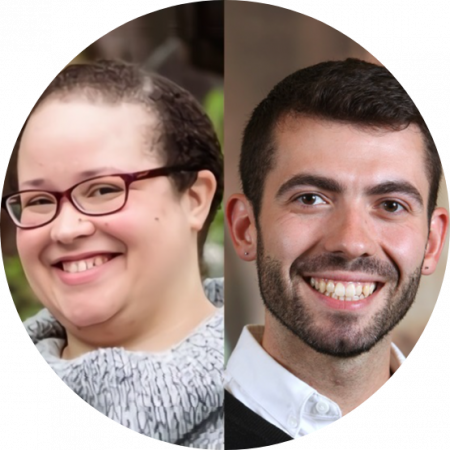Speakers: Elena Darling-Hammond and Danny Pimentel
Moderator: Victoria Docherty
Elena Darling-Hammond is a doctoral student in the Curriculum Studies and Teacher Education (CTE) program with a focus on teacher instruction at Stanford Graduate School of Education. As both a classroom teacher and learning specialist, she gained over 16 years of experience creating curricula for varying levels and subjects.
Daniel Pimentel is a third-year graduate student in the Curriculum Studies and Teacher Education Program (CTE) focusing on Science Education with a cross-area specialization in Learning Sciences and Technology Design (LSTD). He currently works as a science instructional coach and graduate researcher at the Center to Support Excellence in Teaching (CSET), as an instructor in the Stanford Teacher Education Program (STEP), and as a graduate researcher with the Science in the City and DISTAL research groups.
Central questions:
- What are the recommendations for teaching remotely with a larger class? How do different members of the instructional team collaborate with each other?
- How do TAs bridge between students and primary instructors in the course and build community?
- What are helpful technology strategies and teaching practices found throughout the teaching and learning online in EDUC 285?
Key quotes:
We have divided the course up into sections. And sometimes we will meet together in the whole group if it makes sense for whatever activity we’re doing, and other times we will divide up into sections with one primary instructor and TA per section with about 25 students. – Danny Pimentel (03:46)
We would have a lesson plan that was mostly the same, and the same live agenda for both sections and the same activities. But then the way it would play out might be a little different. – Elena Darling-Hammond (05:20)
As a student who is currently taking classes and Elena is also taking classes, we’re familiar with what feels like an increased amount of work time and an increased amount of deliverables that are required. – Danny Pimentel (07:38)
Anything that you can do in advance, do in advance because it takes five minutes in advance. But when you’re in the class, it’s nerve-racking. – Elena Darling-Hammond (11:19)
I think one of the constant conversations we’ve been having is what are the most essential activities that are going to be aligned with the goals for this particular course and how can we really focus on those and bring those to the forefront. – Danny Pimentel (21:06)
Takeaways:
Recommendations for teaching remotely for a large class
- When the class size is big and there are multiple members teaching the course, consider breaking the class into smaller sections
- Keep in mind that lesson plans and live agenda should be the same
- It is fine to have slightly different activities in different sections according to the student demographics, backgrounds, and interests
Leverage TAs as the bridge between students and primary instructors to build community
- TAs can help the primary instructors to understand students’ issues and needs. By sharing the same experiences, TAs can communicate with students in a more natural, supportive, and empathetic way
- The instructional team can use TAs’ understanding of the workload to help plan activities, assignments, and deliverables
- The instructional team can include the positive and helpful resources and tools that the TAs identified as students
Advice for technology strategies
- Students appreciate using the chat function on Zoom as an alternative way to engage in discussion
- Using polls with questions and later asking students to comments on the responses is an effective way to launch class discussions
- Set up the Zoom breakout rooms and poll questions in advance for better time management and avoiding unexpected interruptions. Make backup plans for classes in case something doesn’t work
- Use Google Slides and other interactive tools to replicate in-person activities (such as the affirmation activity mentioned in the Podcast)
